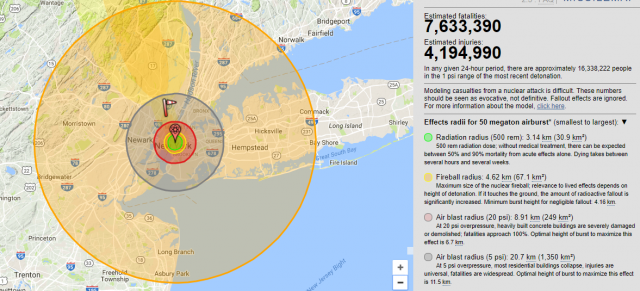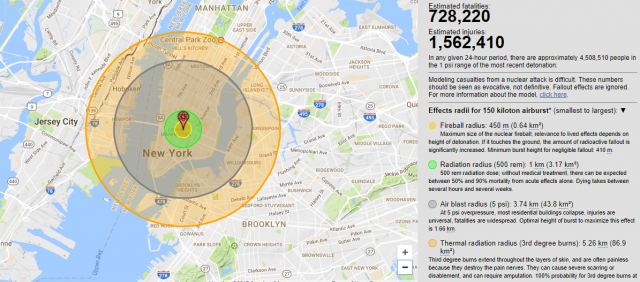North Korea’s most recent nuclear missile test on Sept. 3 – equivalent to a 6.3 magnitude earthquake – and the U.S. Government’s ramped-up rhetoric – exemplified by President Donald Trump promising “fire and fury” and U.S. Secretary of Defense James Mattis portending a “massive military response” to further threats – have raised fears that the crisis could escalate to a nuclear war.
Daryl Kimball, executive director of the Arms Control Association, a pro-disarmament pressure group, told World Press Institute fellows he has never been so worried in his 25-year career. “Tensions are rising to the point where a miscalculation could lead to conflict, and a conflict involving North Korea now could involve nuclear weapons that would put many, many lives at risk,” he said.
Nuclear weapons haven’t been used in conflict since the closing stages of World War II, so it can be hard to fathom how catastrophic an all-out nuclear war would be in terms of lives lost.
If the world’s largest nuclear device ever to be set off, the 50-megaton Soviet “Tsar Bomba” – detonated in a remote arctic test site in 1961 – was dropped on downtown New York City, it would kill an estimated 7.6 million people and injure a further 4.2 million people, according to Nukemap, which visualizes the destructiveness of various nuclear detonations through history.

Thermal radiation causing third-degree burns would spread as far as Jones Beach Island and West Milford, and most buildings served by the New York City subway, including Yankee Stadium and the John F. Kennedy International Airport, would collapse.
There have been widely differing calculations of the power of North Korea’s most recent nuclear explosion, ranging from 50 to 150 kilotons, but Alex Wellerstein, a historian of nuclear technology at the Stevens Institute of Technology who created Nukemap, estimated that it was 150 kilotons.
That would kill about 728,000 people and injure a further 1.5 million people if it was dropped on the same part of New York, according to Nukemap.

There is no consensus on exactly where North Korea is in terms of miniaturizing a nuclear device that can be delivered via a missile, but U.S. intelligence officials believe North Korea has the technology to fit its missiles with nuclear warheads, according to the Washington Post.
New York City, and most of the mainland United States, may be within reach of a strike, although experts believe North Korea’s missiles cannot accurately hit targets.
So far, all efforts to pressure North Korea – sanctions, isolation and military threats – have failed to stop it from developing its nuclear activities.
It’s unlikely to stop now that it is so close to success, according to Yun Sun, an expert on East Asia at the Stimson Center think tank. “North Korea wants regime survival, and thinks this is the best way to ensure it,” she said.
Kimball believes North Korea doesn’t want to bomb the United States, as that would be “national suicide.” But he cautions: “The situation poses a very real, rising threat to the whole world.”



